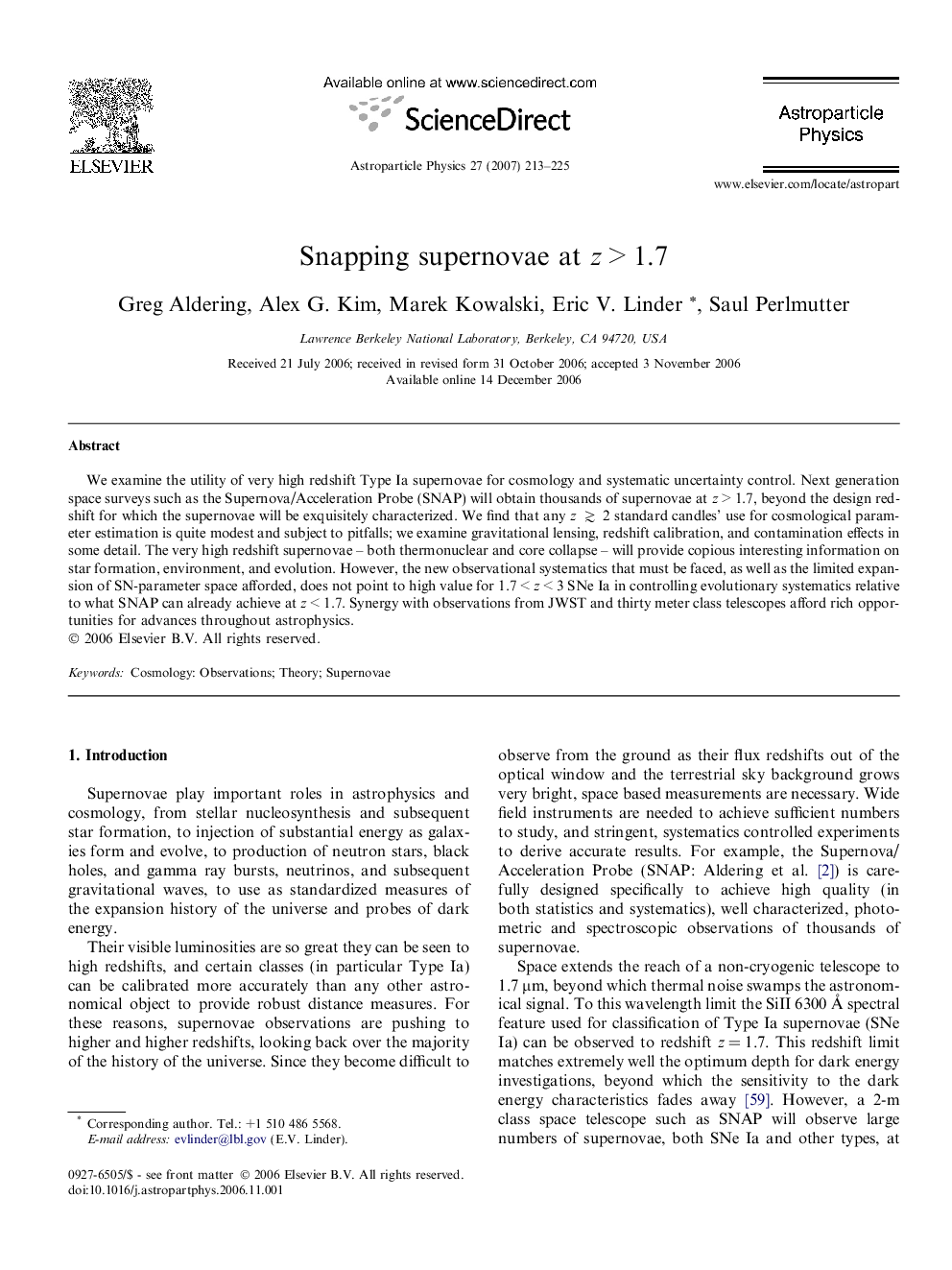| Article ID | Journal | Published Year | Pages | File Type |
|---|---|---|---|---|
| 1771547 | Astroparticle Physics | 2007 | 13 Pages |
Abstract
We examine the utility of very high redshift Type Ia supernovae for cosmology and systematic uncertainty control. Next generation space surveys such as the Supernova/Acceleration Probe (SNAP) will obtain thousands of supernovae at z > 1.7, beyond the design redshift for which the supernovae will be exquisitely characterized. We find that any z â³Â 2 standard candles' use for cosmological parameter estimation is quite modest and subject to pitfalls; we examine gravitational lensing, redshift calibration, and contamination effects in some detail. The very high redshift supernovae - both thermonuclear and core collapse - will provide copious interesting information on star formation, environment, and evolution. However, the new observational systematics that must be faced, as well as the limited expansion of SN-parameter space afforded, does not point to high value for 1.7 < z < 3 SNe Ia in controlling evolutionary systematics relative to what SNAP can already achieve at z < 1.7. Synergy with observations from JWST and thirty meter class telescopes afford rich opportunities for advances throughout astrophysics.
Related Topics
Physical Sciences and Engineering
Physics and Astronomy
Astronomy and Astrophysics
Authors
Greg Aldering, Alex G. Kim, Marek Kowalski, Eric V. Linder, Saul Perlmutter,
